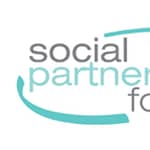This content is part of the Vision for the Public Sector Zone
South Tees NHS Trust was one of 12 trusts selected to pilot the ‘Big Conversation’. The results revealed that staff in lower  grades did not feel engaged or effectively communicated with. To address this, the trust developed a staff engagement strategy and set up sub groups to look in detail at staff engagement and communication.
grades did not feel engaged or effectively communicated with. To address this, the trust developed a staff engagement strategy and set up sub groups to look in detail at staff engagement and communication.
The Organisation
South Tees NHS Trust provides healthcare from two main sites:
The James Cook University Hospital in Middlesbrough, which is one of the largest hospitals in Europe. It is a tertiary referral centre for around 274,000 people.
The Friarage (District General) Hospital in Northallerton, which also hosts the Ministry of Defence Hospital Unit serves around 124,000 people.
The trust employs 6,800 staff and in 2006/07 the total income was £364m. It was named the Dr Foster Acute Hospital of the Year and the HSJ Acute Trust of the Year in 2007 and is currently in the process of applying to be a Foundation Trust by April 2009.
What we did and why
The trust has a strong history of staff engagement and communication. As well as the Improving Working Life (IWL) standards, there is also a trust staff charter and a list of core values which were developed with the input of staff. The trust aims to communicate and involve staff in as many ways possible:
- There is a bi-monthly magazine
- Monthly staff briefing
- Monthly chief executive’s briefing
- A website
- The chief executive holds open forums where staff can come and discuss issues
- An open e-mail, where staff can e-mail the chief executive and get a response within five days
In May 2007, the trust was one of 12 pilot sites selected to conduct the ‘Big Conversation’ with the support of Optimise consultancy. This was the fore-runner to the ‘What Matters to Staff in the NHS’ research which was carried out as part of the Darzi review. A cross section of staff were invited to a focus group meeting to ask them what their five most important issues were. In all, 58 staff attended from a range of staff disciplines and the five most important issues listed were:
- Resources
- Communication
- Training
- Information
- Technology
These were followed by staff specific focus groups, which highlighted how different staff groups were communicated with. It commonly found that staff felt that they were communicated with effectively in the professional grades (Band 5 and above).However, for staff in grades below that, they did not feel engaged or communicated with.
The chief executive felt that there needed to be a more co-ordinated staff engagement strategy and work commenced to implement this in November 2007.
How we did it
There were two main strands to the engagement strategy:
The first involved improving communication. A sub-group of the Trust’s Workforce Strategy group met to consider what exemplary communication would look like. The group considered the communication standards used by Improving Working Lives and looked to enhance these. The group produced a set of standards based on principles of consistency, timeliness, equity, respect, two-way and terminology. In March 2008, trust senior managers began to audit their departments against the standards by asking staff whether they felt communication in their areas met those standards. This enabled feedback at a very local level and action plans in each area are being developed to address communication issues.
The second strand involved improving engagement. The 2007 Staff Survey indicated that while the trust still came in the top 20 per cent of all acute trusts, the raw data saw a slippage of staff involvement. As the Staff Survey is only conducted annually, and leaves a gap of four months from close of questionnaire to results sharing, a more timely measure of staff engagement was required. A sub-group of the Trust’s Workforce Strategy group considered models of best practice and how that could be applied within the trust. With the help of a trust based psychologist, the model agreed was for a scaled down version of the ‘Big Conversation’ to be held in every trust business unit. Each business unit held focus groups involving a cross-selection of staff. They were asked, what three things they enjoy about working in that area and what needs improving. They were then asked to score how well the area does against a list of engagement criteria, which is taken from question 15 of the Staff Survey. Business units will repeat the exercise with the intention of seeing demonstrable improvement against key issues identified in that time.
At departmental and ward level, managers have been asked to engage staff in ‘Little Conversations’. This is designed to improve the communication between managers and staff. Rather than in group format, this is designed to strengthen the relationship between individuals and their managers.
The results and next steps
It is too early to establish how much the steps taken have led to an improvement, but there has already been positive feedback from the business areas. Managers have seen the Communication Standards as a useful tool in identifying gaps in communication and understanding some of the staff’s issues. The Big Conversations have given staff in Bands 1-4 a platform to have their views and ideas heard.
Business units are now working on the results of their Big Conversations and Communication Standards audit, with a view to repeating the exercise in October 2008.
Contact details and further information
Sue Covill, Director of Human Resources
Telephone: 01642 854805 or e-mail Sue.Covill@stees.nhs.uk
This article is not owned by Engage for Success and it was originally posted on the NHS employers website.




